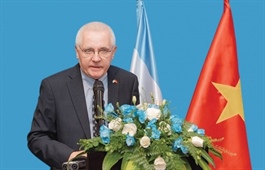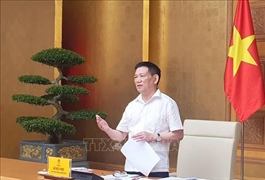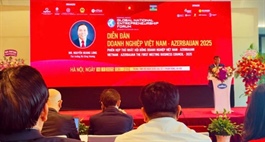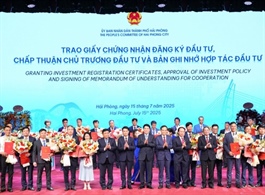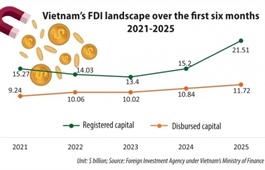Tây Ninh speeds up infrastructure to unlock border economy potential
Tây Ninh speeds up infrastructure to unlock border economy potential
With the vision of becoming a key gateway for trade and regional integration, Tây Ninh Province is accelerating infrastructure development and upgrading its border economy.
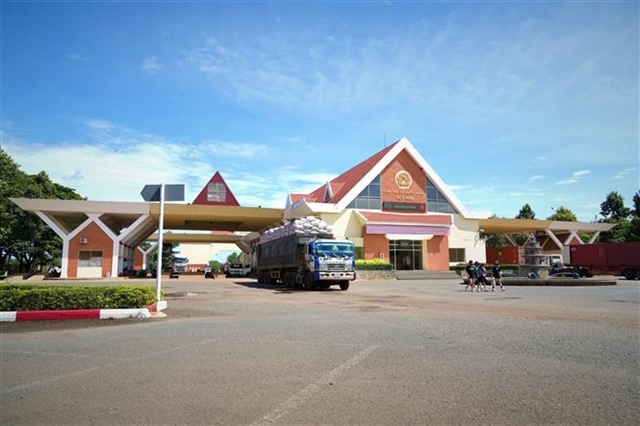
Xa Mát International Border Gate – a vital gateway for Tây Ninh Province’s cross-border trade and international connectivity. — VNA/VNS Photo |
By investing in strategic transport projects, enhancing logistics capacity, and boosting cross-border commerce, the province is positioning itself as a vital link between the southeast and southwest regions of Việt Nam and neighbouring Cambodia and ASEAN markets.
Tây Ninh shares a 374.9km border with Cambodia and three of its provinces: Svay Rieng, Pray Veng, and Tboung Khmum.
The province operates four international border gates – Mộc Bài, Xa Mát, Tân Nam, and Bình Hiệp – along with four national-level gates and 13 auxiliary crossings.
These border routes play a central role in connecting Việt Nam’s domestic economy with regional supply chains.
In 2024, Tây Ninh recorded remarkable progress in foreign trade. According to the provincial Department of Industry and Trade, total import-export turnover reached an estimated US$10.8 billion.
The province's major exports include electricity, electric cables, sports shoes, garments, rice and fruit, while key imports consist of fresh fruit, dried mango slices, rice, sugar, and raw materials for export processing.
Trương Văn Hùng, deputy head of the Tây Ninh Economic Zone Authority, noted that infrastructure fee collection at border gates achieved positive outcomes in the first half of 2025.
Mộc Bài International Border Gate alone handled 140,801 vehicle entries and generated VNĐ193 billion ($7.6 million), fulfilling 92.7 per cent of the annual target of VNĐ209 billion ($8.2 million).
With the highest traffic volume and trade turnover, Mộc Bài serves as a strategic gateway for Việt Nam–Cambodia trade, underlining the effectiveness of investment in cross-border infrastructure.
Infrastructure and logistics
Tây Ninh is intensifying efforts to upgrade critical infrastructure in border areas.
Nguyễn Nam Hưng, director of the provincial Department of Construction, said the province is implementing key projects, including the construction of the Tân Nam International Border Gate and the upgrade of the connecting road from the Tân Nam Border Post to the ĐT.788–ĐT.783 intersection.
“These infrastructure developments are not only vital for the movement of goods – particularly agricultural exports – but also play a key role in border security, diplomacy, and long-term economic integration,” Hưng said.
Tây Ninh currently operates 30 border markets and is planning major logistics hubs, including: a 150-hectare logistics centre at Mộc Bài, a 100-hectare hub at Xa Mát, and smaller storage and logistics service centres of 10 hectares each at Bình Hiệp and Mỹ Quý Tây.
To support small- and medium-sized enterprises in expanding their market access – particularly in cross-border e-commerce, the province is partnering with Singapore’s YCH Group to develop a Mini SuperPort logistics model.
This includes centralised warehousing and distribution to enhance the competitiveness of local businesses.
Concurrently, Tây Ninh is upgrading transport and technical infrastructure across international, main, and auxiliary border gates.
Since 2024, the province has allocated more than VNĐ475 billion ($18.6 million) for four key infrastructure projects.
These include the construction of the ĐD 6A Road within the Mộc Bài Border Economic Zone, with a budget of VNĐ17 billion ($660,000), and several other infrastructure developments inside the same zone valued at VNĐ234 billion ($9.17 million).
In addition, Tây Ninh has invested VNĐ74 billion ($2.9 million) in the construction of the Tân Nam International Border Gate, and VNĐ150 billion ($5.88 million) to upgrade the road connecting the Tân Nam Border Post to the ĐT.788–ĐT.783 intersection.
These projects are part of the province’s broader strategy to enhance cross-border trade and logistics capacity.
Expressway to open new horizons
Among the most anticipated developments is the HCM City – Mộc Bài Expressway (Phase 1), expected to be a game-changer for border connectivity. The segment running through Tây Ninh falls under Component Project 4, which involves compensation, resettlement, and site clearance.
It is being implemented through a public-private partnership (PPP) under a build-operate-transfer (BOT) contract approved by the Prime Minister.
When operational, the expressway will greatly improve the flow of goods, reduce travel times, and attract more investment into logistics and tourism.
It is also set to enhance the competitiveness of the Mộc Bài International Border Gate as a regional trade hub.
Nguyễn Hồng Thanh, deputy chairman of the Tây Ninh People’s Committee, confirmed that the province has instructed local authorities to expedite land clearance and compensation to meet the project timeline.
At the same time, Tây Ninh has prepared a policy proposal for the Mộc Bài Border Economic Zone and submitted it to the Ministry of Finance for consultation, with the aim of obtaining Government approval in the near future.
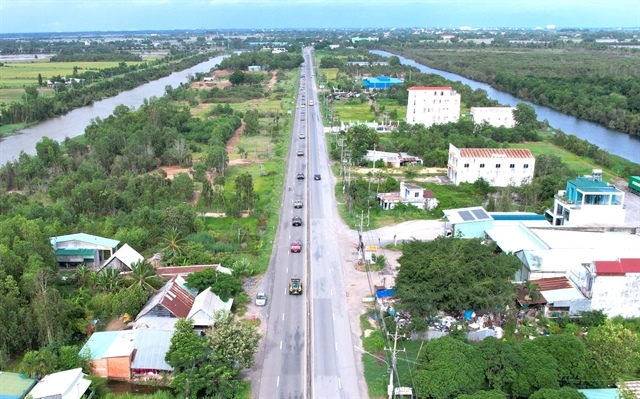
Xa Mát International Border Gate – a vital gateway for Tây Ninh Province’s cross-border trade and international connectivity. — VNA/VNS Photo |
Promoting cultural tourism in border areas
While upgrading infrastructure and trade capacity, Tây Ninh is also tapping into its cultural and historical assets to diversify its border economy.
The Central Office for South Việt Nam – a revolutionary relic – continues to attract visitors and serves as an educational site to instill patriotism among younger generations.
In parallel, the Bà Đen Mountain National Tourist Area is gaining recognition as a premier spiritual and cultural destination in southern Việt Nam.
With improved access and growing tourist services, Tây Ninh aims to develop border tourism as a sustainable economic pillar, complementing its trade and logistics strengths.
With strategic investments and a clear development roadmap, Tây Ninh is steadily transforming itself into a dynamic border province that connects Việt Nam with ASEAN, boosts regional integration, and contributes meaningfully to national growth.
- 09:50 21/07/2025





